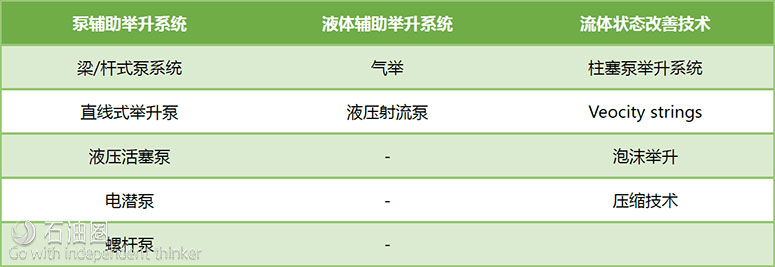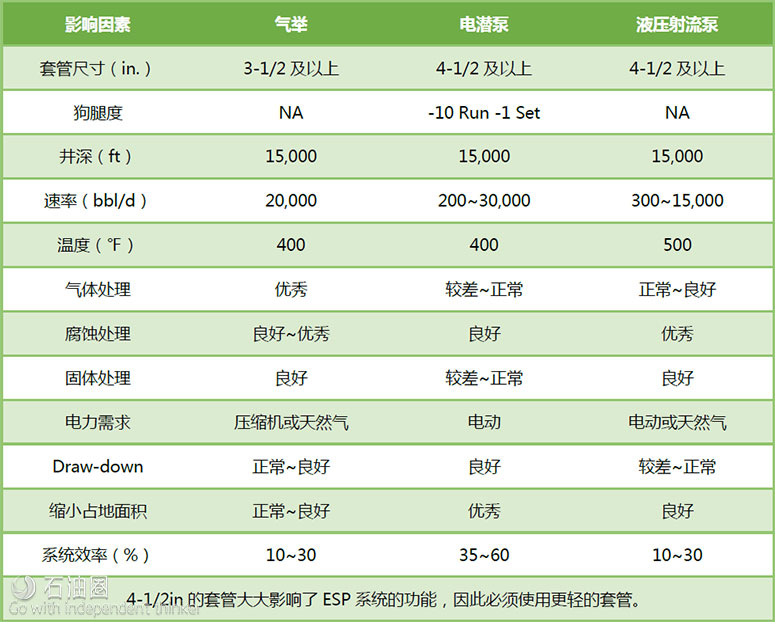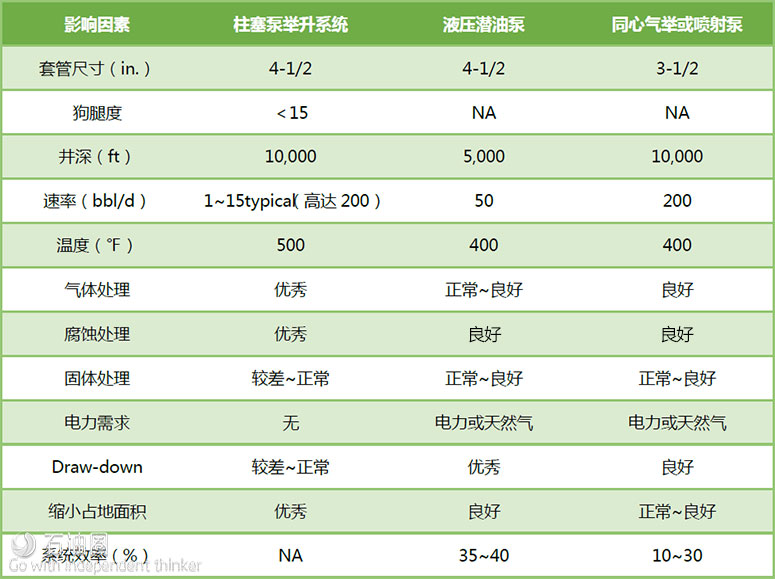Artificial lift technologies are wide and varied. The term, artificial lift, applies to numerous tools, equipment, controls, instruments, computer hardware and software, technologies and techniques used to increase the flow of liquids (usually crude oil, water or a mix of oil and water along with natural gas) from a production well. The lift can be achieved mechanically through the use of a pump. It can be as simple as altering the well’s flow regime by installing a velocity string. Alternatively, lift can be achieved by decreasing the weight of the hydrostatic column in the well by injecting gas into the liquid at the desired depth.
In this report, we discuss three categories of artificial lift systems: (1) pump-assisted systems; (2) fluid-assisted systems; and (3) flow enhancement techniques. Within these three categories, there are at least eleven types of lift technologies. In each category there also exist unconventional or emerging technology types of lift.
BEAM/ROD LIFT DEVELOPMENTS
The basic beam rod pump system consists of three components: a surface beam pump; a connecting rod string; and a downhole plunger pump. However, these systems are more complex then this simple description implies.
Next generation sucker rods. Until now, sucker rods have been manufactured with conventional steel grades, achieving acceptable performance in non-corrosive or benign environments. However, downhole operating conditions are becoming more demanding and producers face corrosive environments and high loading conditions. This has led to an increase in premature sucker rod failures due to fatigue and corrosion fatigue mechanisms.
To overcome these increasingly challenging conditions, Tenaris has developed the new AlphaRod series of sucker rods, designed to satisfy current operative conditions of mature conventional wells and non-conventional wells. These products offer superior toughness, extended lifespan due to increased corrosion resistance under alternative loads and higher service loads in both beam pumping and progressive cavity pumping (PCP) applications.
This new series of sucker rods includes two grades, the AlphaRod HS High Strength and AlphaRod CS Corrosion Service. The AlphaRod HS High Strength was specifically developed for very high loads in medium corrosive environments, offering improved performance compared to conventional high-strength sucker rods. The AlphaRod CS Corrosion Service is a solution for corrosive environments that can withstand higher loads than traditional (API) sucker rods.
The AlphaRod series was launched after four years of R&D activities that were focused on defining new steel chemical composition and the design of a special heat treatment process that guarantees the enhanced features and quality of the final products.
Electric rod rotator systems
National Oilwell Varco (NOV) provides a wide variety of field-proven, highly engineered artificial lift technologies under their completion and production solutions segment. Their systems include automation and monitoring equipment, production service hookup, hydraulic rod pump systems, PCP systems, and tubing rotators. NOV’s rod rotator systems are designed to increase field efficiency and reliability.
Released in the first-quarter 2016, NOV’s Hercules electric rod rotator (ERR) represents an evolution from traditional mechanical rod rotators. The Hercules ERR is actuated using a low-voltage electric motor with a high gear ratio coupled to a control system or standalone control box. Using an electric motor eliminates the need to install a traditional mechanical arm or the cable used to actuate the gear, which increases reliability. A newly integrated rotation sensor, coupled with the control box, monitors performance and alerts operators when failures occur. In addition, the Hercules ERR provides greater control over rotations per day and reduces torsional rod stress.
NOV also developed the smart rod rotator, which builds on sensor technology used in the Hercules ERR, to address premature wear due to wellbore deviations. The smart rod rotator automates the routine of checking rod rotator integrity and, when combined with rod pump controllers (RPCs), allows for remote monitoring and alarm capabilities, reducing on-site time and maintenance. Rod string rotation, used in conjunction with rod guides, removes paraffin from inside the production tubing and distributes wear evenly for rods and rod coupling. The combination of technologies extends the period between workovers while minimizing downtime.
The smart rod rotator has a programmable logic controller (PLC) that will issue a fault or alarm to the RPC if a certain number of rotations do not occur within a user-specified timeframe. The PLC also sends a signal pulse, which is counted and stored in a viewable register, to the RPC every time a complete rotation occurs.

 石油圈
石油圈


.jpg)

和CS抗腐蚀抽油杆(右)在抗疲劳、抗腐蚀方面性能极为出色.jpg)



